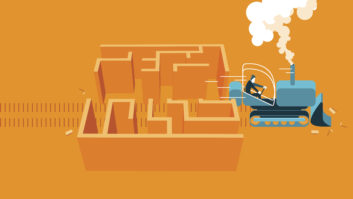People of a certain age begin monitoring the obituary section in their local newspaper to make sure they don’t miss the passing of an old friend or former colleague. As a relatively young person, I’m nowhere close to establishing that ritual myself, but I am morbidly fascinated by the lives that are eulogized, daily, in the New York Times. These are the stories of people who accomplished something worthy enough to have been featured in an international media outlet, the stories of their lives offering a history lesson in microcosm.

For instance, a headline the other day, “Samuel Glazer Dies at 89; Helped Create Mr. Coffee,” caught my eye because I love a good “inventor/business innovation yarn” and, well, I still brew my own coffee.
Even as many of us turn to professional baristas for our gallon of Joe in the morning, it’s hard to imagine a world where a do-it-yourself coffee making machine with requisite paper filter and glass carafe were not de rigueur on every kitchen counter in America. As the Times reported, “before Glazer and Vincent Marotta came up with the idea, the two most common ways to make a cup of coffee at home were to percolate it (smells good but can taste bitter) or to stir instant coffee in boiled water (not as good as brewed).”
As the story goes, the two men, who were good friends since high school, had been partners in a series of businesses including one involving coffee delivery in the Cleveland area in the late 1960s. From customer requests they realized that there was a demand for smaller, home-style versions of the massive industrialgrade coffee machines inside their delivery trucks. Realizing this opportunity, they hired two former Westinghouse engineers to bring their concept to fruition, and by 1972, the Mr. Coffee coffeemaker was a household name, literally.
To avoid the bitterness that boiling coffee can cause, the machine heated the brew to only about 200 degrees. But it may have been the decision to hire former Yankee Joe DiMaggio as their pitchman that really put Mr. Coffee on the map. He was the public face of the brand for 14 years and is credited as one of the reasons why it would gain and hold approximately 50 percent of the market share for coffeemakers into the late ’70s.
A coffeemaker may seem like a pedestrian technology compared with those installed by our industry these days (especially the mini computers most of us carry in our pockets.) But the ability of Glazer and Marotta to recognize a market need and go after it with a technical innovation to simplify and improve on a daily consumer task is at the heart of what most consumer electronics manufacturers and custom installation integrators do every day. There’s a lot of talk about where our industry is headed and how it’s going to survive the rapid evolution of technologies and profit erosion. But, in my opinion, the future has always been about building a better mousetrap and solving new challenges that arise.

As an industry we need to keep looking ahead and educating ourselves on the technologies of the future, rather than dwelling on the products that made us successful in the past. Find a way to reinvent your business like the Mr. Coffee guys did. The goods and services you sell can be as essential to daily life as that morning cup.







